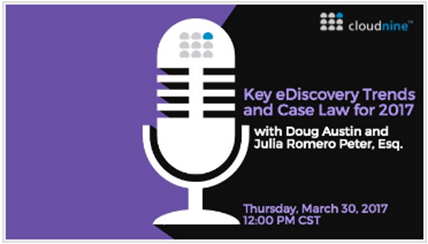The Sedona Principles Has Been Around Longer Than You May Realize: eDiscovery Best Practices
It has been close to fifteen years since the original public comment draft of The Sedona Principles: Best Practices, Recommendations & Principles for Addressing Electronic Document Production was released. Even the second edition of The Sedona Principles was published all the way back in 2007 – that’s before the iPhone was even commercially available! Now, after almost ten years, the public comment version of the Third Edition has now been released.
The Public Comment Version of The Sedona Principles, Third Edition: Best Practices, Recommendations & Principles for Addressing Electronic Document Production is a project of The Sedona Conference© (TSC) Working Group on Electronic Document Retention and Production (WG1). The Sedona Principles, first released in 2002, was the first publication for the Sedona Conference Working Group Series and the flagship publication for WG1.
According to their email introducing the new edition of The Sedona Principles, it “reflects many of [the changes over the past ten years], and integrates the more advanced and detailed analysis developed by WG1 during this interim, found in such publications as the 2008 Sedona Conference Cooperation Proclamation, the 2010 Commentary on Legal Holds, the 2014 Commentary on Information Governance, the 2015 Commentary on Protection of Privileged ESI, and the 2016 Commentary on Proportionality in Electronic Discovery.” It also “follows the further amendments to the Federal Rules of Civil Procedure that went into effect in December 2015.”
Significant changes in the Third Edition include:
- Updates to the commentary associated with Principle 5, consistent with recent case law on the scope of the duty of preservation
- Reworking of Principle 8 and its associated commentary, relating accessibility of ESI to proportionality considerations
- Substantial revision and expansion of Principle 12 and its commentary on forms of production, due to the proliferation of a variety of new ESI sources and types
The 133 page PDF file includes a history of The Sedona Principles, an Introduction that summarizes the role of The Sedona Principles and the main modifications made to Principles and Comments from the Second Edition to the Third Edition, the fourteen principles themselves and detailed Commentaries to the principles which expand on each Principle statement to provide analysis and guidance to the bench and bar on the key legal doctrines and issues implicated by the Principles, as well as any notable exceptions. It also includes an In Memoriam section to remember the contributions of Richard Braman and Bill Butterfield to TSC.
A list of the fourteen principles is found on pages 32 and 33 of the PDF file (pages 15 and 16 of the primary document) and they reflect ideals that all litigants should strive to meet in their eDiscovery efforts. In fact, in our webcast yesterday, we referenced Principle 6 when we discussed the Hyles case ruling by Judge Peck and have certainly referenced other principles over the years in this blog.
To download The Sedona Principles, Third Edition (or any of the editions, for that matter) click here. The public comment period closes on June 30, 2017 and questions and comments regarding The Sedona Principles, Third Edition may be sent to comments@sedonaconference.org. TSC also plans to announce (sometime in April) a 90-minute webinar where members of the drafting team review the principles, answer questions, and take comments.
So, what do you think? Are you familiar with The Sedona Principles? Here’s a good opportunity to become familiar with them! Please share any comments you might have or if you’d like to know more about a particular topic.
Disclaimer: The views represented herein are exclusively the views of the author, and do not necessarily represent the views held by CloudNine. eDiscovery Daily is made available by CloudNine solely for educational purposes to provide general information about general eDiscovery principles and not to provide specific legal advice applicable to any particular circumstance. eDiscovery Daily should not be used as a substitute for competent legal advice from a lawyer you have retained and who has agreed to represent you.











